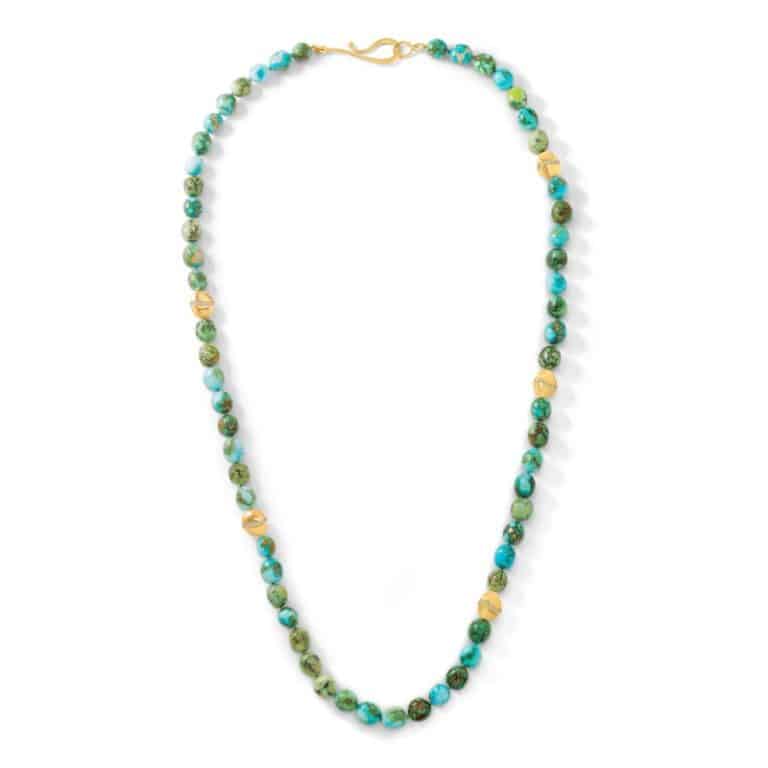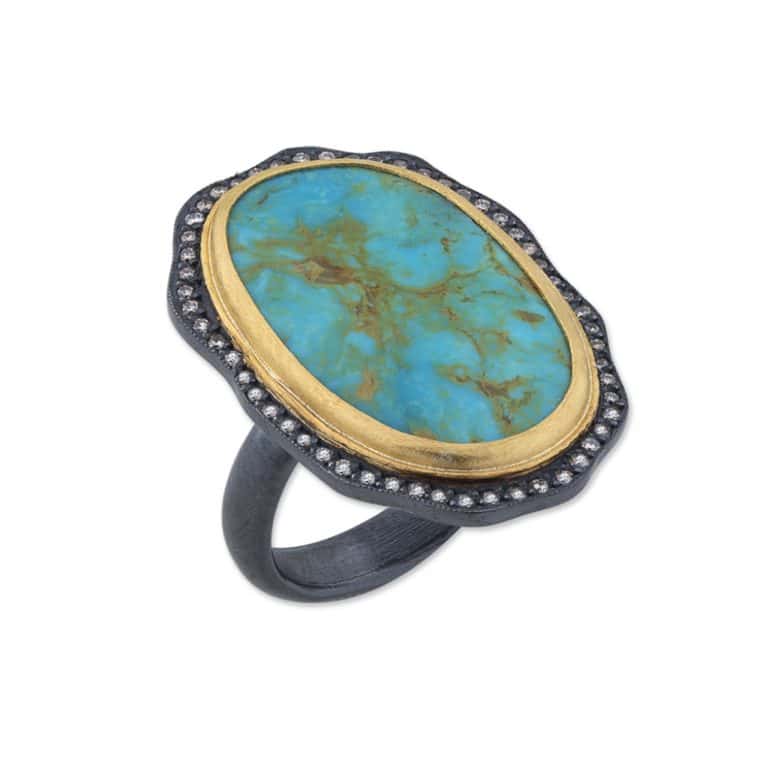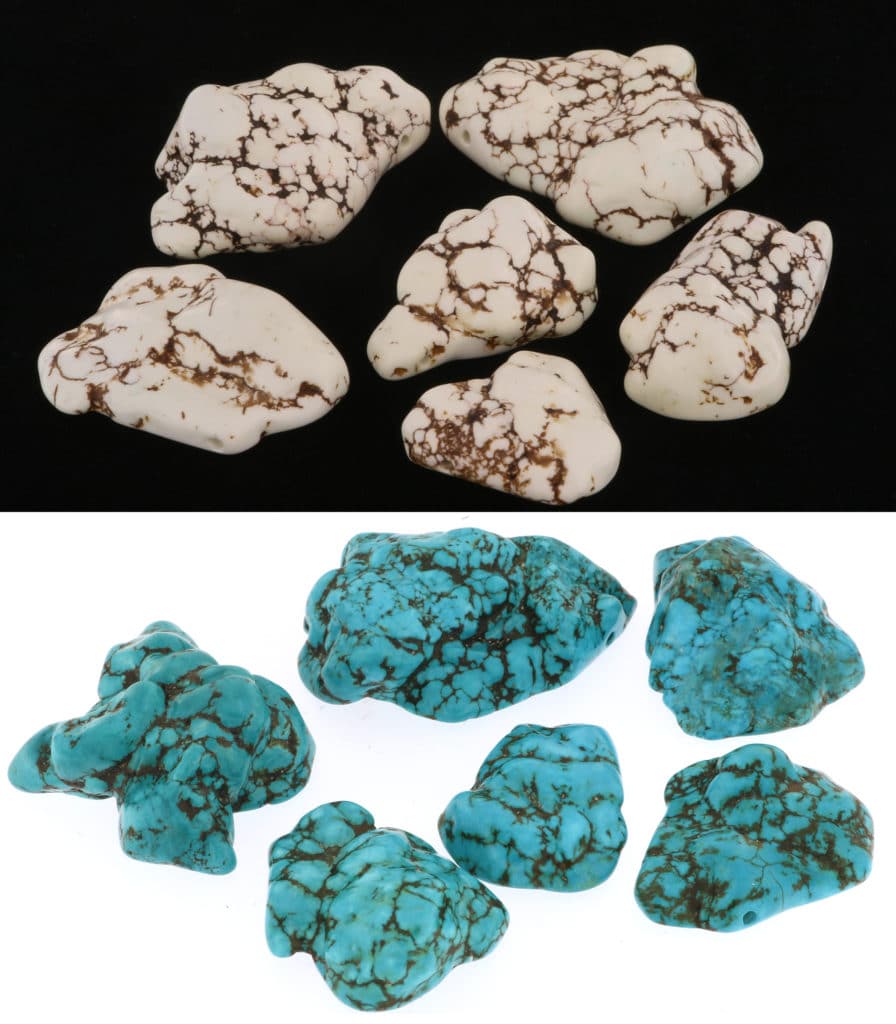By Wade Abel, CG, Director of Gemology, American Gem Society
Turquoise is not only the name of this gemstone but also the color of the bright “robin’s egg” blue that this gemstone is known for! This beautiful gem is commonly found in jewelry with a southwest flare or is a bright and cheerful accessory that pairs with any color.
Turquoise gemstone jewelry is often seen set in silver and can be big and bold or more subtle, sometimes used as accent stones paired with other gemstones in elegant settings or in strands of beads.
Turquoise gemstone jewelry is common in southwest-style jewelry because of the primary locations it is mined. The majority of turquoise comes from the southwest of the United States: Nevada, Arizona, Colorado, California, and New Mexico and this style is influenced by Native American design. It is also found in China, Iran, and Egypt. (Dan, 2019)
This beautiful blue gem was used ornamentally over 3,000 years ago. Discoveries have been made of turquoise carved by Chinese artisans from that time. Around 2,000 years ago, the Persians (modern-day Iran) used turquoise for trading. (Sedawie, 2016)
Turquoise comes in a range of hues, from light blue to greenish blue, and can even appear more green than blue. The color turquoise comes from copper. It is often banded with lines that look like brown or black cracks which give turquoise a distinct contrast and visual appeal that can be featured in the jewelry design.
The patterns created by these lines are from the host rock in which the turquoise gemstone forms. Any host rock where gemstones form is called a matrix. This matrix can be seen in finished gems such as turquoise, or opal. This semi-translucent to opaque gem is typically fashioned in cabochons, beads, or faceted. Often the jewelry design takes advantage of the natural shape of the stone, polished to highlight the color and contrast.
Imitations on the market for turquoise include resin and plastic, as well as gem simulants such as dyed magnesite and dyed howlite. Both of these dyed gemstones display natural matrix patterns like turquoise, however, are naturally white or off-white and dyed blue to appear more like natural turquoise. If you just want the look of turquoise and are not concerned with authenticity, these simulants may be an option.
Additionally, turquoise can be treated to make it harder, or more stable for use in jewelry and enhance its color. This stabilization process uses a filler epoxy or plastic to accomplish this. All simulants and treatments must be disclosed.
Whether you love the southwest style of silver and turquoise or want to add this vibrant, light blue gem to your wardrobe, be sure to shop with a trusted jeweler.
For genuine turquoise jewelry, find an AGS jeweler near you.


